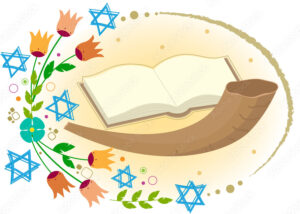Yom Kippur means “Day of Atonement” and refers to the annual Jewish observance of fasting, prayer, and repentance. Part of the High Holidays, Yom Kippur is considered the holiest day on the Jewish calendar.
Yom Kippur offers us the opportunity to alter our conduct, readjust our values, and set things right in our lives. As both seekers and givers of pardon, we turn first to those whom we have wronged, acknowledging our sins and the pain we have caused them. We are also instructed to forgive, to be willing to let go of any resentment we feel towards those who have committed offenses against us. Only then can we turn to God and ask for forgiveness. As we read in the Yom Kippur liturgy, “And for all these, God of forgiveness, forgive us, pardon us, and grant us atonement.”
Despite its solemnity, Yom Kippur is also a day of joy, when the truly penitent person begins gradually to feel at one with God and humankind. Reconciliation and change are the goals of the day’s prayers and fast.
Learn more at ReformJudaism.org Learn more at MyJewishLearning
While our traditional greetings of Shanah Tovah (שנה טובה) or L’shanah Tovah, “[have a] good year” carries through the season, between Rosh Hashanah to Yom Kippur it is customary to say G’mar chatimah tovah ( גמר חתימה טובה ), which means “A good, final sealing,” translated idiomatically as “May you be inscribed [in the Book of Life] for good.”
Music can move our hearts and connect us to themes of the High Holy Day liturgy, to one another, and to God. Here is a brief history of the Kol Nidre chant and here is a link to hear it played by Yo-Yo Ma.
Many people fast on Yom Kippur as a way to separate themselves from the mundane world and as vehicle for reflecting and repenting for sins (you should not fast if you are physically unable to do so). Here are some helpful guidelines to prepare: How to prepare to fast on Yom Kippur.
Yom Kippur ends at nightfall, when three stars appear in the sky. We hear the loud blast of the shofar, signaling the end of the holiday and our fast. Blow the Shofar yourself with these apps: Apple, Google Play
The first meal eaten after Yom Kippur has ended is typically called the “break fast” or “break-the-fast.” Conventional wisdom about resuming eating and drinking is to take things slow and avoid overdoing it. Bagels, spreads, fruit and traditional dishes like kugel are popular choices for breaking the fast. Find some recipe ideas at Nosher or 18Doors.
PJ Library High Holidays at Home, Yom Kippur videos from BimBam
What is Yom Kippur? Meaning, Significance and Tradition via 18Doors